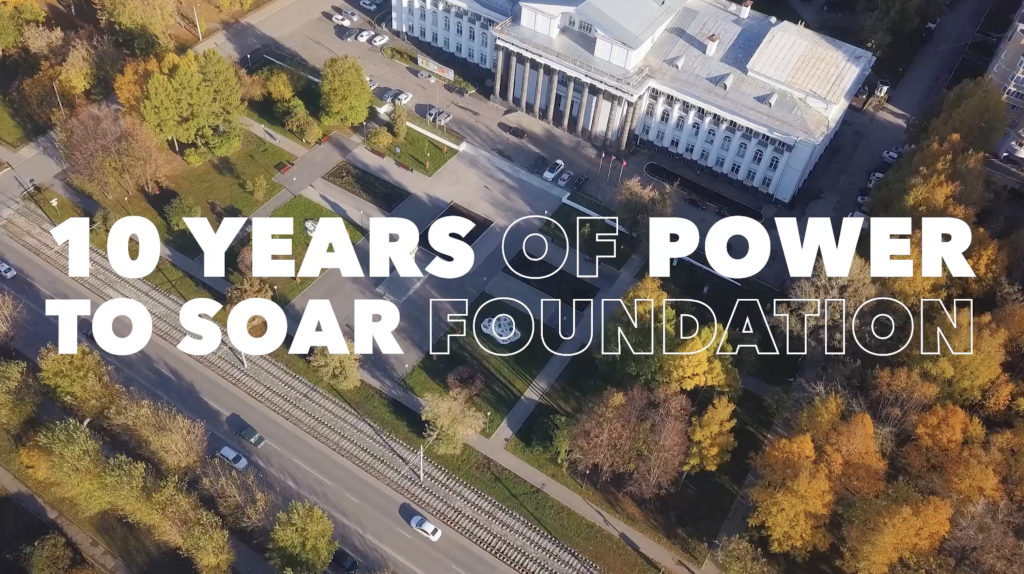Kinship custody (or kinship care) occurs when a court places a child with a relative or someone close to the family, known as fictive kin, rather than in state care. This arrangement is often considered when a child cannot safely return to their parents but doesn’t require placement with the Department of Children and Family Services. The goal is to maintain stability and familial connections, prioritizing the child’s well-being.
Unlike adoption, kinship custody allows the biological parents to retain their rights, including visitation and involvement in major decisions. The caregiver, however, assumes day-to-day responsibilities and provides a safe, nurturing environment. This legal arrangement ensures the child remains connected to their roots while receiving the care they need. In the following sections, readers will learn about how kinship custody works, its benefits, and the legal framework supporting this guardianship option.
Key Takeaways
- Kinship custody places children with relatives or close family connections, ensuring stability and preserving familial bonds when biological parents cannot provide adequate care.
- There are two types of kinship custody: informal (private arrangements without court involvement) and legal (court-ordered arrangements granting caregivers specific rights and responsibilities).
- Unlike adoption, kinship custody allows biological parents to retain visitation rights and decision-making authority while caregivers handle the child’s daily needs.
- Kinship custody differs from foster care as it prioritizes family ties, offers familiarity for children, and may involve less state oversight in informal arrangements.
- While kinship custody fosters emotional security for children, caregivers may face financial and emotional challenges, requiring access to support systems and resources.
- Legal guardianship and permanence planning ensure the child’s stability, with caregivers receiving legal authority to make essential decisions while maintaining connections with biological parents.
Table of Contents
What Is Kinship Custody?
Kinship custody involves placing a child in the care of a relative or someone with a strong familial bond, such as a close family friend. This arrangement often arises when biological parents cannot provide adequate care, ensuring the child remains in a stable and familiar environment. The caregiving role could be fulfilled by grandparents, aunts, uncles, or adults with a kinship bond, depending on the child’s circumstances.

Two primary forms of kinship custody exist: informal and legal. Informal kinship custody occurs without court involvement, where a family member assumes responsibility for the child, often due to temporary situations like a parent’s illness or incarceration. In contrast, legal kinship custody is a formal court-ordered arrangement. Courts may decide on legal custody if a child’s safety is at risk or the parent cannot provide care long-term. This ensures a structured, legally recognized placement for the child.
Kinship custody prioritizes maintaining familial connections and cultural values. It allows children to experience steady growth in a nurturing family environment while fostering emotional security. Unlike adoption, kinship custody preserves the biological parents’ rights. Guardians handle daily responsibilities like housing and schooling, but parents typically retain visitation rights and significant decision-making authority. This relationship lasts until the child turns 18 unless a change in custody occurs.
Types Of Kinship Care
Kinship care involves placing children with relatives or close connections to provide a stable, nurturing environment. It can vary based on legal involvement and the caregiver’s role.
Formal Vs. Informal Kinship Care
Formal kinship care occurs when a child welfare system or court places a child with a specific relative or kin-like caregiver. In this type of care, the caregiver may become licensed as a foster parent and receive support similar to traditional foster families. The state retains legal custody but acknowledges the caregiver’s rights to tend to the child’s daily needs. For example, formal kinship care is often used when child safety concerns require ongoing legal oversight.
Informal kinship care involves private arrangements between relatives or close family friends without court or agency involvement. Biological parents keep custody, but caregivers take on the parenting role temporarily. This setup can sometimes create challenges, such as obtaining permission for medical care or school enrollment when the caregiver lacks legal authority for decision-making.
Voluntary Vs. Involuntary Arrangements
Voluntary kinship care occurs when parents willingly place their child with a trusted relative or kin-like figure. This decision often arises from circumstances like health issues, financial difficulties, or time needed to stabilize personal life. These placements prioritize preserving family ties without direct state intervention, although access to benefits or resources might be limited.
Involuntary kinship care happens when a court or child welfare agency deems it unsafe for a child to remain with their parents. The child may then be placed with relatives through a formal process. In these arrangements, caregivers might receive legal or physical custody depending on the court’s ruling, ensuring the child receives consistent care and support in a secure home environment.
Kinship Custody And Foster Care: Key Differences
Kinship custody and foster care both aim to provide safe, stable homes for children who cannot remain with their biological parents, yet their processes, roles, and responsibilities differ significantly.
Caregiver Relationship And Placement Process
In kinship custody, the child is placed with a relative or someone with a close, familial bond, such as a grandparent, uncle, or trusted family friend. This choice often prioritizes preserving the child’s connections to their family and culture. For foster care, trained foster parents—who may not have prior connections to the child—provide care. Child welfare agencies typically oversee the placement process for both, but informal kinship custody arrangements can occur without their involvement.
Legal Rights And Responsibilities
Kinship custody can be informal or formal. Informal kinship caregivers provide daily care without legal authority, while those with legal custody obtain court-ordered rights to make decisions about the child’s medical, educational, and general welfare needs. In foster care, the state or child welfare agency retains legal custody. Foster parents support day-to-day needs but don’t gain full decision-making authority unless they later adopt the child.
Licensing And Support
Foster parents must undergo a licensing process, which includes background checks, home inspections, and training. They receive financial support and resources to assist with the child’s care. Kinship caregivers may choose to become licensed to access similar resources, though many remain unlicensed. Unlicensed kinship caregivers often depend on personal resources, which can sometimes limit access to necessary support systems.
Emotional Adjustment For Children
Kinship custody offers children familiarity, which eases transitions during challenging times. Living with relatives or trusted family friends often reduces trauma compared to placement in a foster home with strangers. Foster care, while nurturing, may take longer for the child to adjust to, especially in cases where unfamiliarity creates additional emotional stresses.
Custody Duration
In kinship custody, arrangements typically last until the child’s circumstances change or they turn 18. Biological parents often retain visitation and some decision-making rights. Foster care placements can be shorter-term, designed to reunify children with their parents whenever possible, though they sometimes lead to long-term arrangements or adoption.
Benefits And Challenges Of Kinship Custody
Kinship custody provides a child with stability and familiar surroundings while maintaining vital connections to family and culture. However, this arrangement isn’t without its complexities.
Emotional And Financial Considerations
Kinship custody often fosters emotional security for children by placing them in a familiar environment. This reduces feelings of abandonment or trauma they might experience when separated from their parents. Caregivers, such as grandparents or close relatives, may find fulfillment in preserving family bonds and supporting the child during a challenging time. Despite this, caregivers might encounter emotional strain when navigating their dual role as both relative and legal guardian, especially during disputes or difficult adjustments.
Financial obligations can also be significant. Legal caregivers bear costs associated with housing, education, healthcare, and daily necessities. While some may qualify for benefits like Temporary Assistance for Needy Families (TANF) or Social Security, not every kinship caregiver knows how to access these resources. Applying as the child’s payee for eligible benefits or seeking local government assistance programs can ease this burden.
The Role Of Support Systems
Support systems are critical for kinship caregivers managing the complexities of this custody arrangement. Child welfare agencies, counselors, and peer groups provide essential guidance during the emotional transition. Support networks help caregivers understand their legal responsibilities, such as obtaining formal custody documents to access medical and educational services on the child’s behalf.
Close-knit family interactions also enhance the experience, offering caregivers emotional backing. Encouraging open communication within the family can prevent misunderstandings and reinforce a unified approach to caregiving. Regularly seeking advice from local support groups or social services ensures caregivers feel empowered and informed throughout the custody process.
Legal And Permanence Planning For Kinship Custody
Legal and permanence planning in kinship custody ensures the child’s stability and well-being while addressing caregivers’ legal responsibilities. This process involves evaluating the child’s needs and the caregiver’s capacity to provide long-term care.
Legal Kinship Guardianship
Legal kinship guardianship grants caregivers rights and responsibilities similar to biological parents, protecting the child’s welfare without ending parental rights. In this arrangement, caregivers can make decisions about healthcare, education, and daily life. Biological parents typically retain visitation rights and some decision-making authority, ensuring the child maintains a connection with their parents. These guardianship rights generally remain in effect until the child turns 18 unless circumstances, such as parental rehabilitation or caregiver resignation, lead to changes.
Importance Of Permanence Planning
Permanence planning focuses on creating a stable living environment for the child. It provides emotional security by reducing disruptions to daily life. Engaging families in decision-making helps establish a long-term plan that suits both the child and caregiver. For instance, families might choose legal guardianship to maintain biological ties while securing a consistent home environment. Federal laws also encourage developing support systems to assist caregivers in this role.
Support Services For Kinship Caregivers
Kinship caregivers often require assistance to meet the child’s and their own needs. Access to services like educational resources, physical and mental health care, legal aid, respite care, and support groups strengthens the overall caregiving experience. These resources not only lighten caregivers’ burdens but also help ensure the child’s growth in a supportive, stable family setting.
By addressing legal frameworks and offering tailored support plans, effective legal and permanence planning within kinship custody encourages familial connections and a nurturing environment for children.
Frequently Asked Questions
What is kinship custody?
Kinship custody is a legal arrangement where a court places a child with a relative or close family friend instead of state care. This is done to ensure the child’s safety while maintaining familial connections. The caregiver takes on daily responsibilities, but the biological parents usually retain their legal rights.
How is kinship custody different from foster care?
Kinship custody often involves relatives or close family friends, while foster care typically places children with unrelated, trained foster parents. Kinship custody prioritizes familial and cultural connections, whereas foster care is managed directly by child welfare agencies.
What is informal kinship custody?
Informal kinship custody occurs without court involvement. It is often a temporary arrangement where relatives care for a child based on mutual agreement, but caregivers may lack legal authority for major decisions.
What is formal kinship custody?
Formal kinship custody is a court-ordered arrangement. It provides caregivers with legal authority to make decisions for the child’s well-being while allowing the biological parents to retain parental rights, such as visitation.
Why is kinship custody important?
Kinship custody offers children stability and emotional security by placing them with trusted family members or friends. It helps minimize trauma by keeping children in familiar environments, preserving familial or cultural bonds.
How long does kinship custody last?
Kinship custody typically lasts until the child turns 18, unless circumstances change. However, some arrangements may end earlier if the child reunites with their biological parents or transitions to a different custody plan.
What are the biggest challenges for kinship caregivers?
Kinship caregivers often face financial strain, legal complexities, and emotional challenges due to their dual roles. Accessing resources like healthcare, education, and assistance programs can also be difficult without proper guidance.
Do kinship caregivers receive support?
Yes, kinship caregivers may qualify for support such as financial assistance, counseling, or legal aid. Child welfare agencies, local organizations, and peer groups also provide resources to help caregivers navigate their responsibilities.
Can biological parents still visit their child in kinship custody?
Yes, in most kinship custody arrangements, biological parents retain their visitation rights. The arrangement aims to balance the child’s safety while allowing ongoing connections with their parents.
What is permanency planning in kinship custody?
Permanency planning ensures long-term stability for the child in a kinship custody arrangement. It focuses on creating a safe and nurturing environment while addressing the caregiver’s legal responsibilities for the child’s care and well-being.






